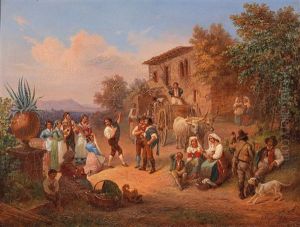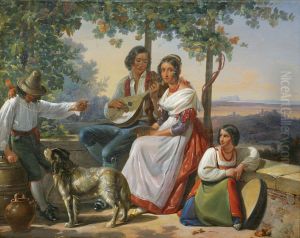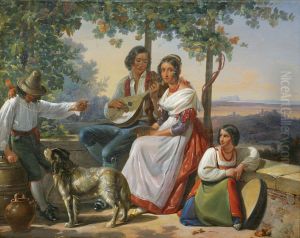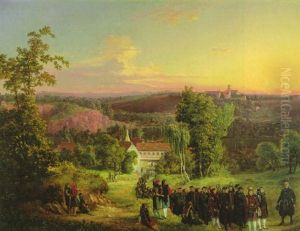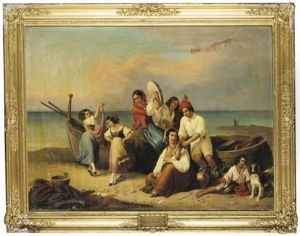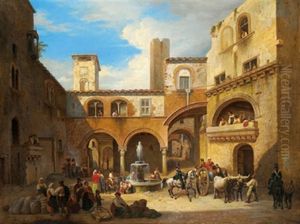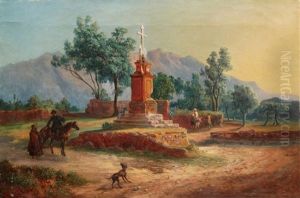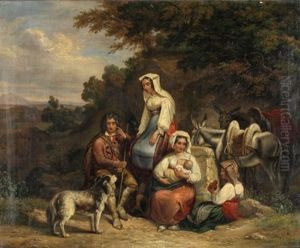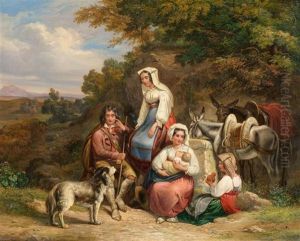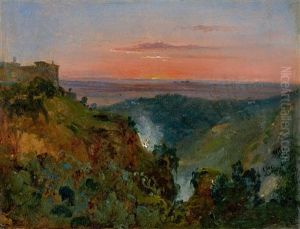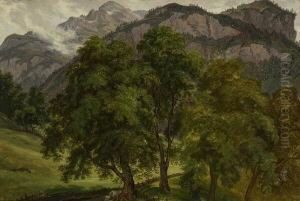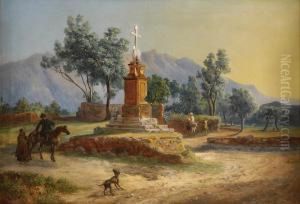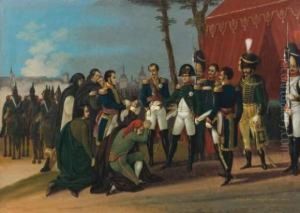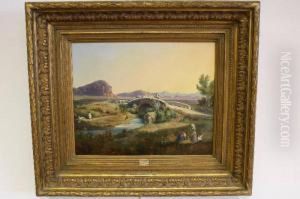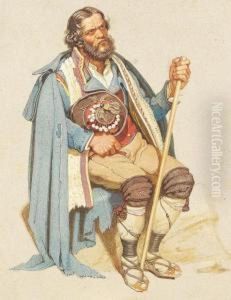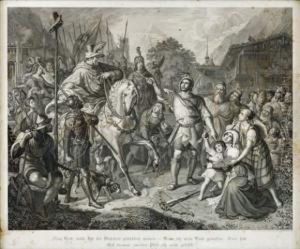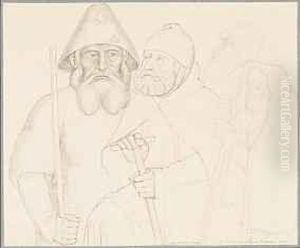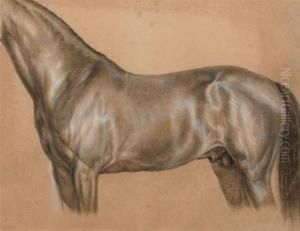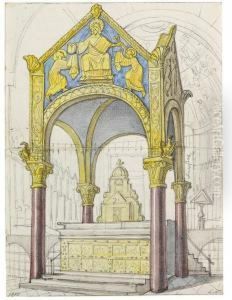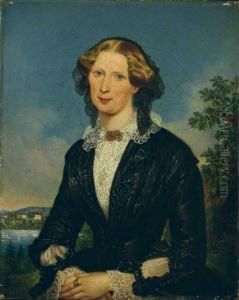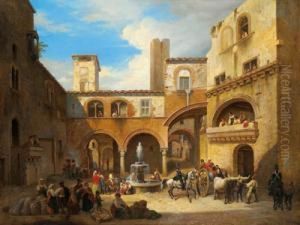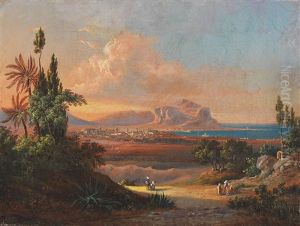Ludwig Vogel Paintings
Ludwig Vogel was a Swiss painter, born on March 15, 1788, in Zürich, Switzerland. He is considered a significant figure in the Swiss romanticism movement, a period that emphasized emotion and individualism as well as a reverence for the historic and natural landscape. Vogel’s work was deeply influenced by his travels and studies across Europe, which included time spent in Germany and Italy, where he was particularly inspired by the Italian Renaissance and the Nazarenes, a German Romantic art movement.
Vogel's early career was marked by his education at the Academy of Fine Arts in Vienna, where he honed his artistic skills and developed a keen interest in historical subjects and landscapes. His style evolved over the years, reflecting a range of influences from his travels and studies. He was especially known for his vibrant watercolors and detailed sketches, which often depicted scenes from Swiss history and folklore, as well as landscapes imbued with a romantic sensibility.
Throughout his life, Vogel was deeply engaged with the cultural and artistic life of Zürich. He played a significant role in the city's artistic community, contributing not only through his artworks but also through his involvement in various cultural institutions. His efforts helped to foster a rich artistic environment in Zürich and encouraged the development of future generations of Swiss artists.
One of his most notable works is the series of watercolors depicting the Swiss national hero Wilhelm Tell, a subject that resonated with the romantic and nationalistic sentiments of his time. These works highlight Vogel's skill in combining historical narrative with a deep appreciation of the Swiss landscape, creating images that celebrated Swiss identity and heritage.
Ludwig Vogel's legacy is preserved in his contributions to Swiss romantic art, his influence on the cultural landscape of Zürich, and his dedication to teaching and nurturing future artists. His works remain a testament to his passion for Switzerland's history and natural beauty, and they continue to be celebrated in exhibitions and collections both in Switzerland and internationally. Vogel passed away on August 25, 1879, in his hometown of Zürich, leaving behind a body of work that continues to inspire appreciation for Swiss art and history.
